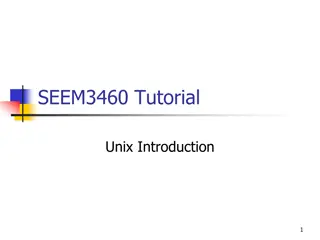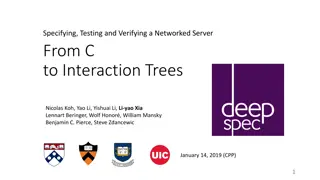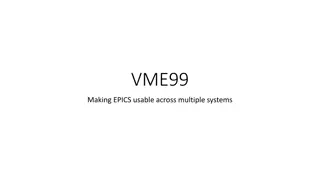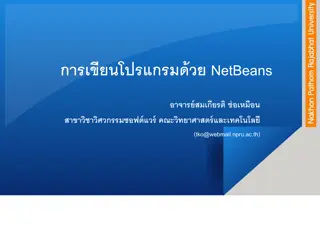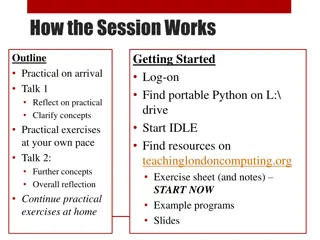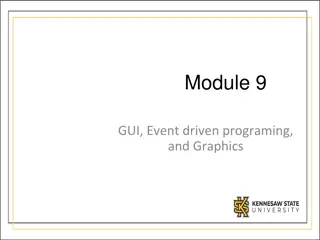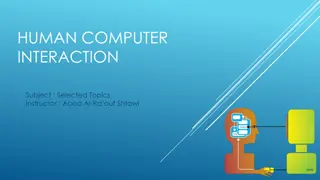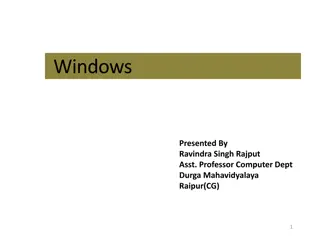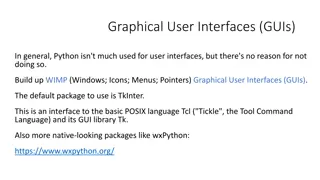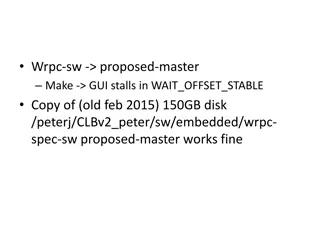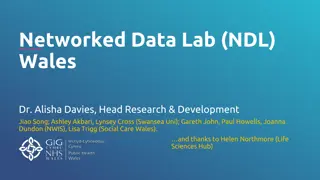
Networked GUI Scenarios for ICT Landscape Changes
Explore the evolution of networked GUI technology, key elements, and the impact on ICT landscapes, including outsourcing strategies and device compatibility challenges. Learn about file serving and central settings in this insightful discussion by Theo Engelman, a Senior ICT Consultant at Utrecht University Library.
Download Presentation

Please find below an Image/Link to download the presentation.
The content on the website is provided AS IS for your information and personal use only. It may not be sold, licensed, or shared on other websites without obtaining consent from the author. If you encounter any issues during the download, it is possible that the publisher has removed the file from their server.
You are allowed to download the files provided on this website for personal or commercial use, subject to the condition that they are used lawfully. All files are the property of their respective owners.
The content on the website is provided AS IS for your information and personal use only. It may not be sold, licensed, or shared on other websites without obtaining consent from the author.
E N D
Presentation Transcript
ALEPH Networked GUI Scenarios for now and the future Theo Engelman Senior ICT consultant Utrecht University Library (Netherlands)
Outline Changes in the ICT landscape Networked GUI; why and how Key elements in details Adding new elements & techniques o Samba o Terminal Server o Webservices Conclusions Questions and discussion
Changes in the ICT landscape Outsourcing Aleph client workstations to; o Central ICT in University Commercial partner Outsourcing Aleph server to; o Central ICT in University or consortium Ex Libris cloud More partners involved means security issues o o "we can't use the GUI unless we are connected to the network via an Ethernet cable; our wireless blocks the port we need." (Aleph500-Discuss-L Thursday, July 25, 2013) BYOD (bring your own device) GYDD (get your devices donated) Recently we received a donation of Apple devices. Ex Libris has advised that the ALEPH client could be used on these with the help of a Windows emulator such as Wine. Could mac users share their experiences and advice on running ALEPH on mac e.g. the best/most popular windows emulation to use, setup & configuration and gotchas . (Aleph500-Discuss-L Monday, June 10, 2013)
Networked GUI; why Easy to deploy Cost efficient to maintain and update o Keep central settings central and offer personal or functional settings local o No need for Version check on client Facilitates using test and production server using only one client installation Enables roaming use of client by profile o Although Ex Libris advises profiles should be stored on client device this is not necessary Facilitates server based computing o BYOD and GYDD
Key elements networked GUI 1. File Server 2. Profile.dat 4. Profile files 3. Client files
File serving: just a shared folder on a server! Is installation really necessary? No, even installing the main network on any windows PC and then copying the file tree to any file server suffices The file server is the CENTRAL installation, serving the executables and default settings for ALL clients only clients that need different settings should have supplemental settings in their profiles Profile.dat is the essential file on the file server, determining where the profiles reside
The GUI is a Windows application !!!! Installation on a windows device (PC) is mandatory The GUI runs on the client device, so the system files (*.dll, *.ocx, fonts etc.) should reside there (folders depend on 32/64 bits) No executables on the client device, only shortcuts to the file server Peripherals attached to the client device Keyboard devices like Barcode readers RFID readers Printers (preferably avoid, use networked printers!)
4. Profiles Used for personal and functional profiles Settings other than or additional to defaults Printer settings (slips, receipts etc.) Email settings (sender address for replies) StationID: %profile\alephcom\tab\stationid.dat Statistics in transaction tables, also for ARC Transport between sublibraries,determining when home configured on Alephserver/AXX_1/XXX50/tab/tab_attr_sublibrary Save defaults buttons in Items and ACQ All other client settings like colors that normally are not changed by staff but can be Stored on: Personal: network (home directory or windows profile) Functional: networked share for all staff users
Networked GUI; how Choose the file server to use Install the main network based GUI on server Prepare the file Profile.dat on server o Decide where the profiles should be stored o Decide how functional profiles should be used o Prepare the functional profiles settings Prepare the network based client setup o net500.exe o net500.ini having path to file server installation Run the network based client setup on client o can be silent, no need for user actions Done
Landscape Aleph server File Servers Client PC Profiles functional Profiles personal
Adding new elements & techniques SAMBA for file server SMB (Samba) offers file server to Windows Aleph server renowned for robustness Running file server on Aleph server, less TCO If Aleph server is single point of failure, why not Aleph network file server? Install SMB-deamon on Aleph server Configure users and access rights Copy Aleph main network file tree to Samba share Point Aleph client shortcuts to Samba share Trash your Windows file servers
Landscape Aleph server + File Server + Profiles functional Client PC Profiles personal
Adding new elements & techniques Terminal server traditional Why Making Aleph available from home Preparing for thin client workstations How Run the network based client setup on a Windows Terminal Server (2003 that time) 32-bits and 64-bits Configure users and access rights Can replace PC s or be an add on for PC s
Landscape Aleph server + File Server + Profiles functional GUI on Client PC GUI on Terminal Server Profiles personal
Adding new elements & techniques Terminal server web services Making Aleph available via browser Preparing for: BYOD (bring your own device) GYDD (get your devices donated) Outsourcing Aleph client hosting to; Central ICT in University Commercial partner Ex Libris cloud Outsourcing Aleph server hosting to; Central ICT in University or consortium Ex Libris cloud Facilitates Aleph GUI deployment for customers without any ICT- department
Landscape in cloud Aleph Server File Server possible Terminal Server Network based GUI File Server possible Profiles functional Profiles personal
Conclusions Networked GUI has many scenarios All scenarios lower TCO Aleph server can act as file server (Samba) Terminal server can host network based client Ex Libris should certify GUI for Windows server 2008R2 and 2012 (64-bits) Terminal server web offers GUI to BYOD/GYDD Terminal server facilitates GUI in Cloud Cloud can host Aleph terminal server Should Ex Libris offer Aleph server combined with Aleph terminal server in their cloud?



